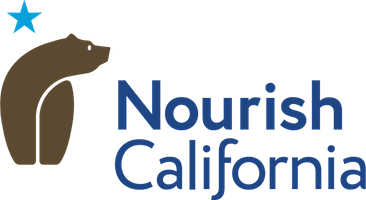10.1.2013 What does a federal shutdown mean for low-income Californians who rely on nutrition programs?
Our partners at Feeding America provided this helpful summary:
SNAP – SNAP has statutory authority to continue distributing benefits during October. This authority comes from ARRA, through which Congress provided “such sums as are necessary” to fund the temporary benefit boost. Additionally, about $2 billion in SNAP contingency funds are available and could be used to support state administrative activities to issue and process benefits. Contingency funds are provided in annual appropriations and do not expire until the end of FY2014. SNAP is providing about $6 billion per month in benefits, so unfortunately the contingency funds would not go very far if needed to help fund benefits.
TEFAP Administration and CSFP – No additional funds would be available to support the Commodity Assistance Programs (CAP) including the Commodity Supplemental Food Program (CSFP), The Emergency Food Assistance Program (TEFAP), and administrative funding. While no new funding will be able, existing inventories can still be used. In addition, we expect that if and when funding is provided through a Continuing Resolution, it will be available retroactively, which would allow programs to cover their administrative costs retroactively.
WIC – WIC is most at risk because USDA has no legal authority to continue providing benefits under the Women, Infants and Children program after Monday, but states may have money and legal authority to fund the assistance for a week or so. Some contingency funds for WIC also may be available, according to the agency.
Child Nutrition Programs – School breakfast and lunch programs and meals provided in day care settings (CACFP) would continue into October. This is also true for the Summer Food Service Program (SFSP) and the Special Milk Program. School meal program and CACFP providers are reimbursed for meals served 30 days after the end of the service month, so providers would not be paid for meals provided in October until the end of November. Most state agencies will continue to have FY13 funds available for state administrative expenses. State administrative expenses are awarded for a two-year grant period and states are permitted to carry over up to 20 percent of their allocation into the second year of the grant period.
Senior Nutrition Programs – During a government shutdown, the Department of Health and Human Services will not be able to fund Senior Nutrition programs, which includes both home-delivered meals (Meals on Wheels) and senior congregate feeding programs. Local Meals on Wheels programs will not be affected immediately. Programs are generally reimbursed after meals are already delivered. However, if the government stays closed for a lengthy period of time, this will result in a direct financial loss for Meals on Wheels programs that receive federal funding. Additionally, state or local funding reserves that have been used to make up for sequestration cuts are likely depleted, so any cushion that may have been there to weather the shutdown is gone.



